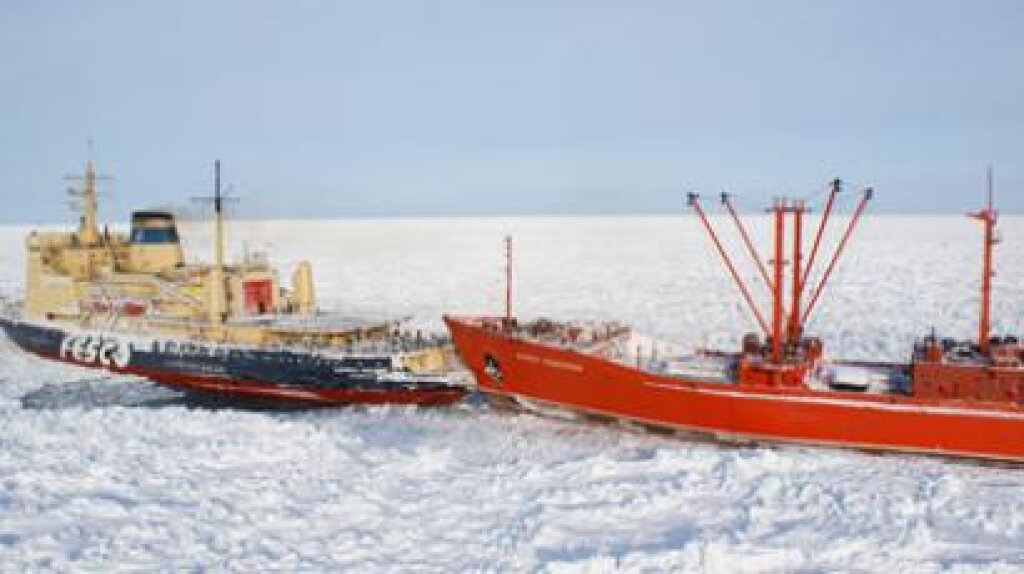Milosz Reterski is a graduate student at the Center for Global Affairs at New York University
In early 2014, as the West reeled in shock at Russia’s invasion of Ukraine, the UN Commission on the Limits of the Continental Shelf quietly awarded Russia effective sovereignty of the Sea of Okhotsk.[1] A marginal body of water of the northern Pacific, its annexation is arguably far more profitable due to its tremendous bioresources, to say nothing of its untapped hydrocarbons.[2] By arguing that nearly the entire subarctic sea was within its continental shelf, Russia finally managed to claim exclusive rights to the high seas enclave, over 10,000 square miles of bountiful fishing grounds surrounded by Russia’s exclusive economic zone. Russia has now been given a legal tool with which to enforce its historic vows to deny access to foreign fleets, but the closing of the Sea of Okhotsk will also greatly exacerbate maritime tensions in the greater Pacific.
The Sea of Okhotsk is surrounded by Russia’s mainland and the “1,000 kilometer Cossack saber”[3] of the Kuril archipelago. The sea’s robust convection currents create its extremely abundant biological resources,[4] considered the richest in the world with 46% of the northern Pacific’s bioresources.[5]
A Sea of Troubles
As early as the 1850s, Russia was dispatching warships to discourage foreign fishing in what it already considered to be “a Russian inland sea.”[6] The early 1990s saw the arrival of the distant water fishing nations, stressing the bioresources of the entire northern Pacific. The sudden depletion of walleye pollack stocks deeply concerned Russia, and ultranationalist party leader Vladimir Zhirinovsky threatened to “drive everyone out of the Sea of Okhotsk.”[7] A series of sudden Russian naval maneuvers in the enclave was perceived as a “provocation” by foreign fishing fleets.[8]
Russia attempted to curtail foreign fishing with its interpretation of maritime law. It argued that effective conservation of the transitory pollack population was only possible if Russia asserted authority beyond its EEZ’s 200-mile limit.[9] This interpretation justified Russia’s unilateral declaration of a series of temporary moratoriums on fishing, as well as its delineation of a narrow corridor through which all foreign vessels were to access the enclave.[10]
But despite Russia’s attempts to muscle out other nations, foreign trawlers continued to use the enclave as a technically legal haven from which to surreptitiously exploit the rest of the sea. In 1995, 11,000 inspections conducted by Russian constabularies found 14% of vessels to be in violation of fishing quotas,[11] often leading to arrests of the crews, impoundment of vessels, and occasional naval gunfire. Russia’s authority to set and enforce quotas for the entire sea was formally recognized with the implementation of the UN Fish Stocks Agreement of 1995.[12]
Competition for Pacific fisheries has only heated up since the 1990s. China has emerged as the largest producer in the northwest Pacific,[13] accounting for over 62% of fish caught regionally in 2012 (while Russia and Japan accounted for 13% and 15%, respectively). This is a huge increase in China’s share compared with the multipolar 1990s, when China took an average of 24% of the northwest Pacific catch (while Russia and Japan caught 14% and 15%).[14]
These official statistics do not account for the rampant fish piracy in the northwest Pacific.[15] The revenue lost by Russia due to illegal exportation, perhaps as high as $30 billion annually, may exceed Russia’s total legal receipts,[16] a fact that is certainly contributing to Russia’s increased militarization of the sea.[17]
Shoring up Russia's Claims
This year, Russia successfully proved to the UN that the underwater shelf extends its territory almost to the Kurils. This ruling sets a precedent for arguments towards Russia’s claims of the North Pole, contested by at least two other Arctic nations.[18] However, the Arctic is an inhospitable expanse, which will remain inconvenient for major maritime traffic for at least the next few decades, and ownership of the North Pole will have little impact on the price of bluefin in Tsukiji.
To date, foreign access, legal and otherwise, to the Sea of Okhotsk has been a relief valve for pressures elsewhere in the Pacific. As Russia begins formalizing the UN’s recommendations,[19] its suppression of access to the Okhotsk will force pressures to burst into already stressed seas further south.
While the overall volume of fish caught has remained consistent in the northwest Pacific, the increasingly crowded neighborhood of the South China Sea has experienced huge increases in production, the 2012 haul being more than double the average of the 1990s.[20] All this fishing is occurring in an area of water of which some 40% is embroiled in territorial disputes.[21] The quantity of China’s fishing boats is assuming a quality all its own, already being used to shield Chinese oil platforms operating illegally.[22] The fleet, numbering nearly 700,000 vessels,[23] is networked, heavily subsidized, and encouraged by the Chinese government to enter disputed waters.[24]
Having been pushed out of the rich Sea of Okhotsk by Russia, the Asian nations will be forced to scramble for diminishing food resources, in increasingly polluted seas, to feed skyrocketing populations. We can anticipate more kinetic maneuvers involving swarms of Chinese vessels in the greater Pacific jostling over both seafood and rich hydrocarbons.
Notes
[1] Summary of the Recommendations of the Commission on the Limits of the Continental Shelf in Regard to the Partial Revised Submission Made by the Russian Federation in Respect of the Sea of Okhotsk on 28 February 2013. Commission on the Limits of the Continental Shelf. (United Nations. March 11, 2014) http://www.un.org/depts/los/clcs_new/submissions_files/rus01_rev13/2014_03_13_COM_REC_RUS_Summary.pdf
[2] See John R. Haines, "'Ali Baba's Cave': The Sea of Okhotsk's Contentious Triangle." Orbis. (Volume 58, Issue 4, 2014) Pages 584-603.
[3] Michael A. Thompson, The Northern Territories: Case Study in Japanese-Soviet Relations. Naval Postgraduate School. (June 1982) Page 26.
[4] Victor Sapozhnikov et al., Hydrochemical Atlas of the Sea of Okhotsk 2001. National Oceanographic Data Center, National Oceanic and Atmospheric Administration. http://www.nodc.noaa.gov/OC5/okhotsk/ok_doc.html Accessed October 10, 2014.
[5] Global International Waters Assessment Sea of Okhotsk, GIWA Regional Assessment 30. University of Kalmar on behalf of United Nations Environment Programme. (2006) Page 21. http://www.unep.org/dewa/giwa/areas/reports/r30/giwa_regional_assessment_30.pdf
[6] Extracts From the "Historical Review of the Formation of the Russian-American Company, and Their Proceedings up to the Present Time" (In Russian), by P. Tikhmenieff, St. Petersburgh, 1863. Part II, Pages 130-139. As cited in Proceedings of the Tribunal of Arbitration, Convened at Paris, Under the Treaty Between the United States ... and Great Britain, Concluded at Washington, February 29, 1892, for the Determination of Questions Between the Two Governments Concerning the Jurisdictional Rights of the United States in the Waters of Bering Sea, Volume 4. Bering Sea Tribunal of Arbitration, U.S. Government Printing Office. (1895)Pages 265-268.
[7]Moscow INTERFAX 1994-01-06 “Threatens to Close Sea of Okhotsk.” Foreign Broadcast Information Service SOV-94-005. Daily Report, Central Eurasia. (January 7, 1994) Page 10.
[8] Polish Press Agency, "Polish Fishing in Okhotsk Sea Could be Disrupted by Russian Maneuvers." BBC Summary of World Broadcasts, Part 2 Eastern Europe; 2. USSR and East European Relations. (August 17, 1993)
[9] Jon K. Goltz, “The Sea of Okhotsk Peanut Hole: How the United Nations Draft Agreement on Straddling Stocks Might Preserve the Pollack Fishery.” Pacific Rim Law and Policy. (Volume 4, No. 2., 1995) Pages 443-478.
[10]Andrei Ivanov, “Russia: Illegal Fishing Causes Growing Concern in Far East.” IPS-Inter Press Service, March 7, 1996.
[11] Author’s calculations based on ibid.
[12] Background Paper on the United Nations Fish Stocks Agreement. United Nations. Undated. http://www.un.org/depts/los/convention_agreements/Background_paper_on_UNFSA.pdf
[13] The Northwest Pacific (Major Fishing Area 61) is the smallest area containing the Sea of Okhotsk for which the UN’s Food and Agriculture Organization (FAO) maintains statistical fish production data. FAO Major Fishing Areas, PACIFIC, NORTHWEST (Major Fishing Area 61). CWP Data Collection. In: FAO Fisheries and Aquaculture Department. Updated October 1, 2004. http://www.fao.org/fishery/area/Area61/en
[14] All figures are author’s calculations based on the query-based dataset of fish catch volumes available from FAO. Global Capture Production 1950-2012, http://www.fao.org/figis/servlet/TabSelector
[15] Ganapathiraju Pramod, et al., “Estimates of Illegal and Unreported Fish in Seafood Imports to the USA.” Marine Policy, Volume 48 (2014). Page 102.
[16] “Japan Got 30 Times More Russian Crab Than Russia ‘Exported.’” RIA Novosti, August 20, 2013. http://en.ria.ru/russia/20130820/182872588/Japan-Got-30-Times-More-Russian-Crab-Than-Russia-Exported.html Accessed October 12, 2014.
[17] “Putin Orders Combat Readiness Checks in Russia’s Eastern Military District." RIA Novosti, September 11, 2014. http://en.ria.ru/russia/20140911/192830073/Putin-Orders-Combat-Readiness-Checks-in-Russias-Eastern-Military.html Accessed October 10, 2014.
[18] Jenny Johnson, "Who Owns the North Pole? Debate Heats Up as Climate Change Transforms Arctic." Bloomberg, April 4, 2014. http://www.bloomberg.com/news/2014-04-04/who-owns-the-north-pole-debate-heats-up-as-climate-change-transforms-arctic.html Accessed October 10, 2014.
[19] "Russia to Submit Claim for Okhotsk Sea Shelf by Year-End." RIA Novosti, April 16, 2014. http://en.ria.ru/russia/20140416/189242930/Russia-to-Submit-Claim-for-Okhotsk-Sea-Shelf-by-Year-End.html Accessed October 10, 2014.
[20] Author’s calculations based on Global Capture Production 1950-2012.
[21] Author’s calculations based on a map of territorial claims in Global International Waters Assessment South China Sea, GIWA Regional Assessment 54. University of Kalmar on behalf of United Nations Environment Programme. (2006) Page 20.
[22] Wendell Minnick, "Fishing Vessels in China Serve as Proxy Enforcers." DefenseNews, August 17, 2014. http://www.defensenews.com/article/20140817/DEFREG03/308170013/Fishing-Vessels-China-Serve-Proxy-Enforcers Accessed October 12, 2014.
[23] The State of World Fisheries and Aquaculture: Opportunities and Challenges. FAO. (2014) Page 36. http://www.fao.org/3/a-i3720e/i3720e01.pdf
[24] John Rutwitch, "Satellites and seafood: China keeps fishing fleet connected in disputed waters." Reuters, June 27, 2014. http://www.reuters.com/article/2014/07/28/us-southchinasea-china-fishing-insight-idUSKBN0FW0QP20140728



